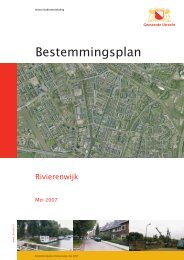freakonomics
freakonomics
freakonomics
Create successful ePaper yourself
Turn your PDF publications into a flip-book with our unique Google optimized e-Paper software.
How, then, can we tell if the abortion-crime link is a case of causality rather than simply<br />
correlation?<br />
One way to test the effect of abortion on crime would be to measure crime data in the five<br />
states where abortion was made legal before the Supreme Court extended abortion rights<br />
to the rest of the country. In New York, California, Washington, Alaska, and Hawaii, a<br />
woman had been able to obtain a legal abortion for at least two years before Roe v.<br />
Wade. And indeed, those early-legalizing states saw crime begin to fall earlier than the<br />
other forty-five states and the District of Columbia. Between 1988 and 1994, violent<br />
crime in the early-legalizing states fell 13 percent compared to the other states; between<br />
1994 and 1997, their murder rates fell 23 percent more than those of the other states.<br />
But what if those early legalizers simply got lucky? What else might we look for in the<br />
data to establish an abortion-crime link?<br />
One factor to look for would be a correlation between each state’s abortion rate and its<br />
crime rate. Sure enough, the states with the highest abortion rates in the 1970s<br />
experienced the greatest crime drops in the 1990s, while states with low abortion rates<br />
experienced smaller crime drops. (This correlation exists even when controlling for a<br />
variety of factors that influence crime: a state’s level of incarceration, number of police,<br />
and its economic situation.) Since 1985, states with high abortion rates have experienced<br />
a roughly 30 percent drop in crime relative to low-abortion states. (New York City had<br />
high abortion rates and lay within an early-legalizing state, a pair of facts that further<br />
dampen the claim that innovative policing caused the crime drop.) Moreover, there was<br />
no link between a given state’s abortion rate and its crime rate before the late 1980s—<br />
when the first cohort affected by legalized abortion was reaching its criminal prime—<br />
which is yet another indication that Roe v. Wade was indeed the event that tipped the<br />
crime scale.<br />
There are even more correlations, positive and negative, that shore up the abortion-crime<br />
link. In states with high abortion rates, the entire decline in crime was among the post-<br />
Roe cohort as opposed to older criminals. Also, studies of Australia and Canada have<br />
since established a similar link between legalized abortion and crime. And the post-Roe<br />
cohort was not only missing thousands of young male criminals but also thousands of<br />
single, teenage mothers—for many of the aborted baby girls would have been the<br />
children most likely to replicate their own mothers’ tendencies.<br />
To discover that abortion was one of the greatest crime-lowering factors in American<br />
history is, needless to say, jarring. It feels less Darwinian than Swiftian; it calls to mind a<br />
long ago dart attributed to G. K. Chesterton: when there aren’t enough hats to go around,<br />
the problem isn’t solved by lopping off some heads. The crime drop was, in the language<br />
of economists, an “unintended benefit” of legalized abortion. But one need not oppose<br />
abortion on moral or religious grounds to feel shaken by the notion of a private sadness<br />
being converted into a public good.









